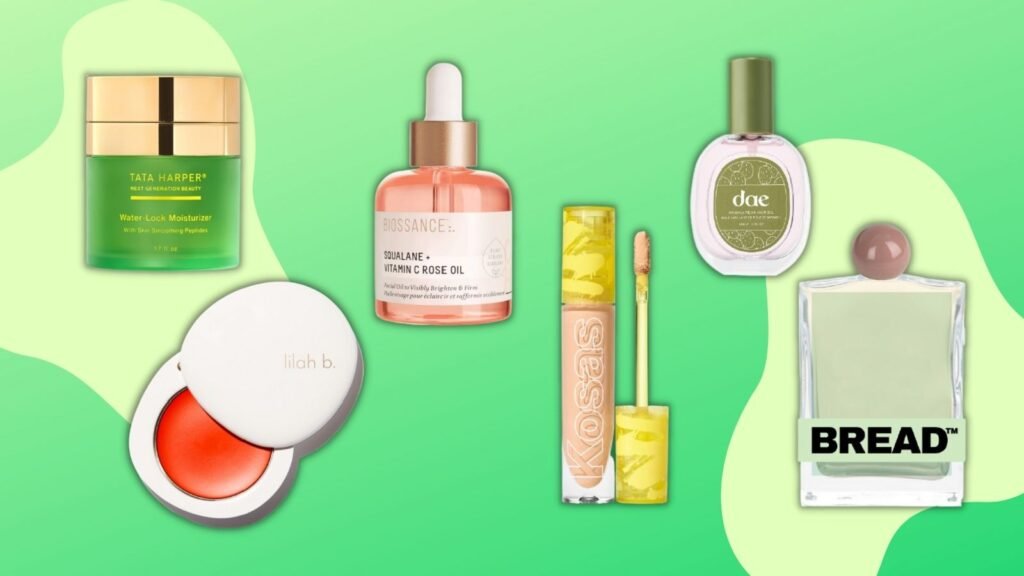In recent years, the beauty industry has undergone a massive shift. As more consumers become conscious of their environmental footprint, sustainable U.S. beauty brands are gaining attention for their commitment to eco-friendly practices, cruelty-free formulations, and clean ingredients. These brands aren’t just a trend—they represent a movement toward a better, greener future.
From zero-waste packaging to ethically sourced ingredients, American beauty companies are showing the world that it’s possible to be both glamorous and green. In this article, we’ll explore how U.S. beauty brands are prioritizing sustainability, who the top players are, and why this matters more than ever.
Why Sustainability Matters in Beauty
The beauty industry is often associated with plastic waste, water pollution, and chemical-heavy products. In fact:
- Over 120 billion units of packaging are produced by the beauty industry every year.
- Many conventional products contain harmful ingredients like parabens, sulfates, and microplastics.
- Animal testing, though banned in many countries, is still practiced in some markets.
With climate change and environmental degradation becoming more visible, consumers are demanding change. Sustainability in beauty now means:
- Using recyclable or refillable packaging
- Sourcing natural and organic ingredients ethically
- Avoiding animal testing
- Reducing carbon emissions during production
- Offering transparency about product sourcing and impact
Top Sustainable U.S. Beauty Brands to Watch
1. Ilia Beauty
Focus: Clean ingredients, recyclable packaging
Ilia Beauty combines skincare and makeup with sustainability. They use recycled aluminum, glass components, and responsibly sourced paper for packaging. Their products are free of toxic ingredients and made with skin-loving botanicals.
Standout Initiative:
Ilia’s partnership with Pact Collective allows customers to send back empty beauty containers for responsible recycling.
2. RMS Beauty
Focus: Raw, organic ingredients
Founded by makeup artist Rose-Marie Swift, RMS Beauty emphasizes purity. They use minimal processing to preserve the natural benefits of their ingredients. Packaging includes recyclable glass and metal.
Why it stands out:
They avoid synthetic preservatives and use food-grade, organic oils and butters.
3. Beautycounter
Focus: Advocacy, ingredient safety, transparency
Beautycounter is a leader in clean beauty. They created “The Never List”—1,800 harmful ingredients they promise never to use. They’re also active in pushing for stricter beauty industry regulations in the U.S.
Notable Achievement:
Beautycounter was named one of Fast Company’s Most Innovative Companies for its work in clean beauty and policy reform.
4. Aether Beauty
Focus: Zero-waste packaging, vegan formulas
Aether Beauty is known for its crystal-infused eyeshadow palettes and stunning design. What sets them apart is their completely recyclable packaging—no mirrors, magnets, or excess plastic.
Sustainability Highlight:
They donate 1% of sales to environmental nonprofits through 1% for the Planet.
5. Herbivore Botanicals
Focus: Plant-based skincare, glass packaging
Herbivore Botanicals uses high-quality natural ingredients without fillers. Their elegant glass bottles are recyclable and reusable, cutting down on single-use plastic.
Eco-friendly Practice:
They use biodegradable shipping materials and limit their use of water in production.
6. Thrive Causemetics
Focus: Vegan, cruelty-free, giving back
This brand not only avoids animal testing but also supports causes for women in need. Every purchase funds charities helping women overcome domestic abuse, cancer, and homelessness.
Social + Environmental Impact:
They use recyclable packaging and avoid overproduction by manufacturing in small batches.
Common Sustainable Practices Among U.S. Beauty Brands
To qualify as truly sustainable, brands must walk the talk. Here are common eco-friendly initiatives practiced by leading sustainable U.S. beauty brands:
1. Refill Systems
Brands like Fenty Skin and Kjaer Weis offer refillable containers, helping reduce packaging waste by encouraging customers to reuse outer cases.
2. Biodegradable Packaging
Compostable wrappers and biodegradable cartons are becoming more common. Seed Phytonutrients uses shower-safe paper bottles.
3. Carbon-Neutral Operations
Some companies, such as Youth to the People, aim for carbon neutrality by using renewable energy, offsetting emissions, and sourcing locally.
4. Cruelty-Free and Vegan Products
Testing on animals is increasingly being replaced by cruelty-free alternatives. Brands like Pacifica Beauty and Tower 28 are 100% vegan.
5. Sustainable Sourcing
Many brands are committed to ethically sourced ingredients. For example, True Botanicals uses ingredients certified by Made Safe, ensuring they are safe for both humans and the planet.
Challenges in Achieving Full Sustainability
Despite these efforts, reaching 100% sustainability is not easy. Here are a few hurdles:
- Supply Chain Transparency: Tracing every ingredient to its origin is complex.
- Recycling Confusion: Not all “recyclable” materials are accepted by local recycling programs.
- Cost Factors: Sustainable materials and ethical labor practices often increase production costs.
- Greenwashing: Some brands falsely market themselves as sustainable without real action.
It’s important for consumers to research and support brands with third-party certifications, such as:
- Leaping Bunny (cruelty-free)
- USDA Organic
- ECOCERT
- B Corporation Certification
- CarbonNeutral® Certification
What Consumers Can Do
Sustainability isn’t just a brand’s responsibility. As a consumer, you can also make a big impact:
- Support Brands with a Mission: Choose companies that are transparent and committed to sustainability.
- Buy Less, Choose Well: Opt for multi-use products and quality over quantity.
- Recycle Properly: Rinse out containers and follow local recycling guidelines.
- Explore Refills: Look for brands that offer refills instead of full repurchases.
- Speak Up: Request sustainable practices from your favorite beauty brands.
Future of Sustainable U.S. Beauty Brands

The future looks bright for sustainable U.S. beauty brands. With increased awareness, advanced technology, and consumer demand, more companies will be forced to prioritize planet over profit.
Emerging trends include:
- Waterless Beauty: Concentrated formulas with no added water help save a precious resource.
- Upcycled Ingredients: Using byproducts like fruit peels or coffee grounds to reduce waste.
- AI and Data-Driven Supply Chains: Optimizing logistics to lower emissions.
- Plastic-Free Beauty Stores: Encouraging in-store refills and reusable containers.
Big retailers like Sephora and Ulta are also creating eco-friendly sections and partnerships with sustainable brands, making it easier for shoppers to make greener choices.
Final Thoughts
The rise of sustainable U.S. beauty brands proves that consumers want more than just pretty packaging and catchy ads—they want values. As brands continue to embrace sustainability, they inspire a shift not only in the beauty world but in consumer culture as a whole.
Being kind to your skin shouldn’t mean being harsh to the planet. Thankfully, with so many conscious beauty brands leading the way, you can glow responsibly.
Read Next – Post-COVID Beauty Business Models Reshape Salons & Spas





